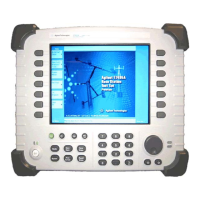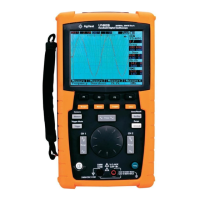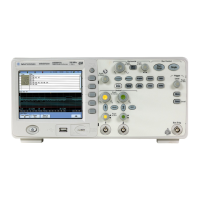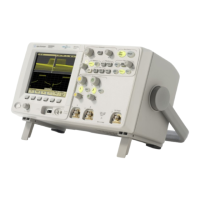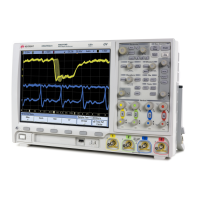Using Load Cards and Loads 5
E6198B Switch/Load Unit User Manual 5-17
Selecting a Load Fuse
The load fuses used are IEC 5x20 mm, 5-ampere slow-blow.
These fuses may be replaced by larger fuses if required by your
equipment, but not to exceed 8 amperes. In any event, the
maximum fuse rating must not exceed an I
2
T value of 102-126.
*
Sample Load Configurations
Four sets of tandem loads, each set sharing a current-sense
resistor, may be mounted on the Agilent E6175A Load Card. You
may need to drill holes in the sheet metal to attach the loads. On
the eight-channel load card, the pairs are labeled 1 through 4 on
the PC board silkscreen. For example, the load card could be
configured to supply a power source and power ground to a
module and measure the total current consumed by the module.
Figure 5-3 shows four other examples of how loads could be
configured.
In the NPN Pull-up example #1 (Figure 5-11, top), power switch
one (PwrSw1), in its normally-closed state, supplies power to
the first load. When the load switch connected to the NPN
transistor output driver is closed, the current can be sensed at
the external DMM when the corresponding Isense MUX relays
are closed. The ground return in this example is assumed to be
switched through another load card or connected directly to the
UUT.
In the multiplex load example #2 (Figure 5-11, middle), a single
load is shared by three load switches and may be configured as
either a pull-up or pull-down through jumpers to J3 or J4 to J5.
The solder-in jumpers are installed by the system integrator to
allow the sharing of a load. The multiplexed load switches may
be closed individually or in tandem as required to perform the
test.
In the PNP pull-down example #3 (Figure 5-11, middle), power
switch three (PwrSw3), in its normally closed state, supplies a
switched ground to the PNP transistor. The positive source to
the transistor is assumed to be switched through another load
card to the UUT.
In bridge load example #4 (<Blue>Figure 5-11, bottom), both
load switches and power switch four (PwrSw4) through the
bridge configuration jumper J7, provide a sensed current path
for pin-to-pin loads on the UUT. Each channel pair (1-4) is
* The I
2
T figure is an industry standard term. If, for example, a fuse with a rating of I
2
T = 100 experiences a
current surge of 10A, it can maintain that current for 1 second before its capacity is exceeded. (10A * 10A *
1 Second = 100)
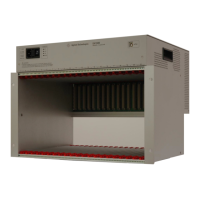
